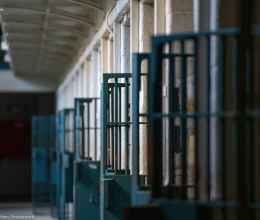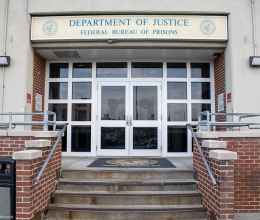
This blog post originally appeared as an op-ed in the Pensacola News-Journal.
Oftentimes, it takes a tragedy to draw our attention to inadequacies and failures that have been long simmering just below the surface. And when the time comes to rebuild after a tragedy, if we lose the opportunity to also fix those long-festering problems, we do ourselves a disservice.
As we near two months since the tragedy at the Escambia County Jail that killed and injured inmates and staff, our community must take stock of our jail's controversial history and do what we can to change it.
Even before the lethal explosion, the jail was not where it should be.
In the past six years, the Escambia County Jail has been cited for appalling levels of violence due to lack of correctional staff and inadequate mental health care services, has been investigated by the Department of Justice, saw improvements and setbacks in conditions, and changed hands from Sheriff David Morgan to Escambia County.
The terrible conditions of the Escambia County Jail must be remedied immediately, but meeting constitutional standards only addresses symptoms of a larger and more-expensive problem: overincarceration.
Each year, our jail houses thousands of people – 70 percent of whom have not been convicted of a crime and could potentially be released without a threat of public safety or avoidance of justice. Also, it unfairly impacts low-income communities and people of color. This costs millions in tax dollars with questionable benefit to public safety.
Fortunately for community leaders, specific policies and procedures will reduce our jail population and improve the troubling inmate-to-guard ratios.
We can encourage the state attorney and courts to ensure that individuals charged with low-level, nonviolent crimes are released on their own recognizance. The impoverished represent a disproportionate number of criminal defendants. Many people have jobs and families to support and are housed before trial only because they cannot afford bail. It is both a waste of money and a detriment to those being unnecessarily incarcerated.
We can better utilize community or electronic monitoring in lieu of jail. For those who pose a flight risk, ankle monitors are a cheap and easy way to keep track of individuals awaiting trial while allowing them to be productive citizens. In Escambia County, defendants are required to pay to take part in the monitoring program. Many cannot afford to do so, thus they remain in jail. The county should waive or pay this fee.
We can also use court notifications. Automated or personal reminders are proven to reduce failure-to-appear rates. It is simple, yet effective.
The criminal justice system is not a solution to every problem a community faces, and harsher penalties and an overreliance on incarceration strain resources and damage lives.
To be sure, the flaws in a criminal justice system didn't cause the explosion that claimed two lives at the jail – but neither will a rebuilt building or new safety measures mean a "fixed" jail. So, as our community moves past the shock of April 30 and begins to reckon with what comes next for the facility, we have to look beyond repairing a damaged building and fix a broken system.






